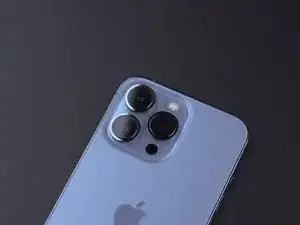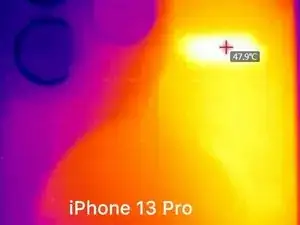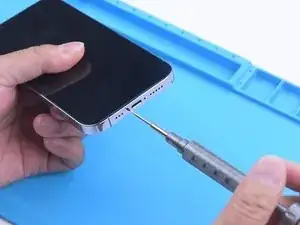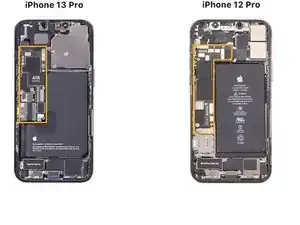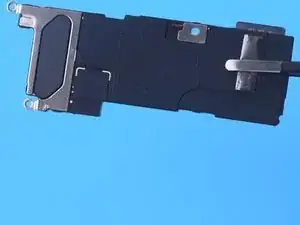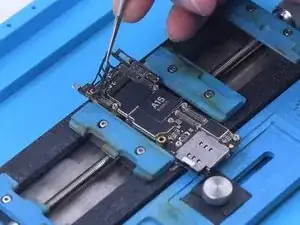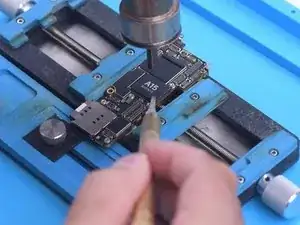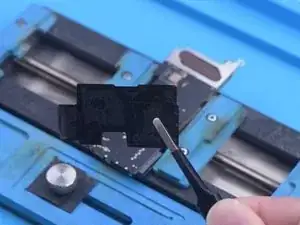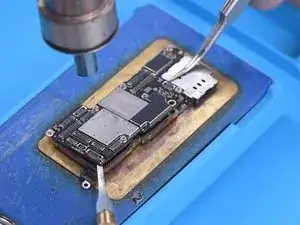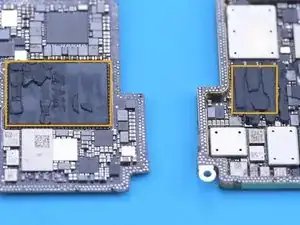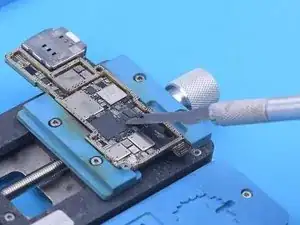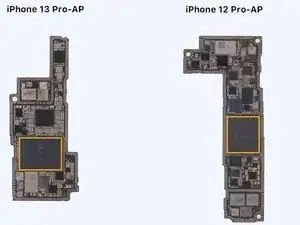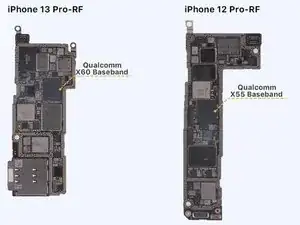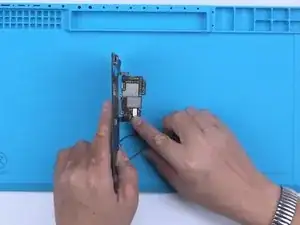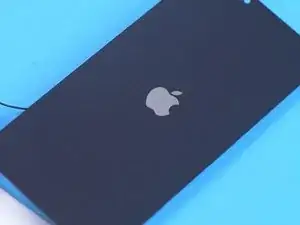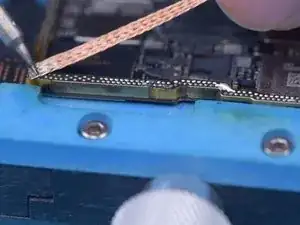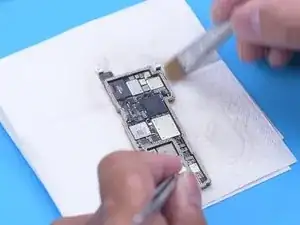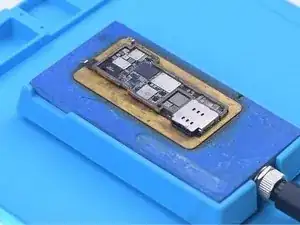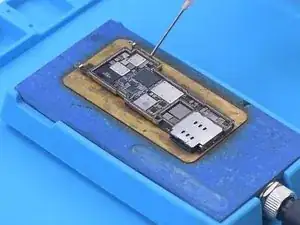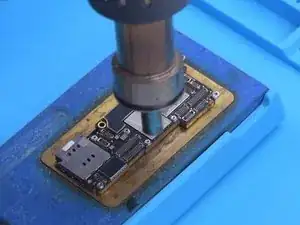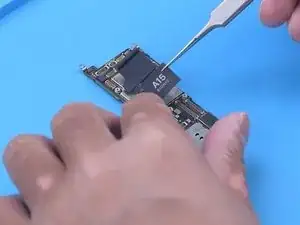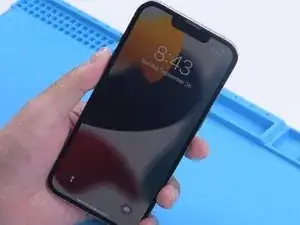-
-
In our last post, we did a teardown on iPhone 13 Pro. Today we will show how to separate the motherboard of the iPhone 13 Pro to share motherboard differences and repair difficulty.
-
In the first place, we benchmark iPhone 13 Pro and iPhone 12 Pro at the same time. Through LINCSEEK Infrared Thermal Camera, it is found that iPhone 13 Pro gets hotter than iPhone 12 Pro. iPhone 13 Pro can reach a maximum temperature of around 48 °C while the maximum temperature of iPhone 12 Pro is around 40 °C.
-
-
-
Then we separate the motherboard of iPhone 13 Pro to view its interior structure and find out what has caused the overheating. In the meantime, we will walk you through how to separate and recombine the motherboard.
-
iPhone 13 Pro's motherboard is designed to be more compact to leave more room for the battery. Furthermore, the motherboard no longer uses an L-shaped design.
-
-
-
Remove the motherboard. The double-layered design is still used. SIM card reader is not stand-alone and is welded to the motherboard.
-
-
-
For better heat dissipation, both sides of the motherboard are covered with thick heat dissipation tapes.
-
Then we remove foam on the motherboard. Remove tape on the motherboard with Hot Air Gun at 100 °C. It can be seen that NAND is under the A15 tape.
-
-
-
Continue to remove tapes on the back of the motherboard. Heat dissipation tapes on the motherboard are reusable. Please do not damage the tapes during repair to avoid influencing the heat dissipation effect after assembly.
-
We found that the back of iPhone 13 Pro’s signal board has components. Please pay attention not to damage the components while separating.
-
-
-
Since the heating platform for iPhone 13 Pro has not come out yet, we use a universal heating platform at 170 °C for separation. Because the middle layer of iPhone 13 lineup’s motherboard still uses middle-temperature Solder Paste for soldering.
-
Add heat with Hot Air Gun at 330 °C around the motherboard, when the temperature of the Heating Platform reaches 150 °C. As the logic board becomes loose, remove the logic board with tweezers.
-
The CPU is stacked with the baseband which is bad for motherboard heat dissipation.
-
-
-
Then we remove thermal grease on the chips.
-
The size of A15 has increased a lot, which makes CPU desoldering more difficult.
-
-
-
The iPhone 13 Pro's baseband CPU has been upgraded to the Qualcomm X60. It is believed that the phone signal will be more stable than previous models.
-
Then we see if a single logic board of iPhone 13 Pro can trigger the boot-up. Power the logic board with a Direct Current Supply.
-
Connect the display. Trigger the boot-up with tweezers. We can see that iPhone 13 Pro took longer to trigger the boot-up than previous models. It takes 8-10 seconds for the Apple logo to appear on the screen. This may be caused by the system.
-
-
-
Then we recombine the signal board with the logic board. Apply some Paste Flux to the bonding pads of the signal board. To better clean tin subsequently, apply some low-temperature Solder Paste to neutralize the temperature of the bonding pads.
-
Clean the bonding pads with Soldering Iron at 380 °C and solder wick. Apply solder paste to the bonding pads of the logic board. Please do not affect surrounding components while applying solder paste. This should also be noted while using Soldering Iron to remove tin.
-
Clean the bonding pads with PCB Cleaner.
-
-
-
Then we reball the signal board. Attach the signal board to the Reballing Platform. Put the reballing stencil in position. Apply middle-temperature Solder Paste evenly.
-
Remove the reballing stencil. Put the signal board on the Heating Platform to heat. After the solder balls are formed, cool the signal board.
-
-
-
Apply some Paste Flux to the bonding pads. Align the logic board with the signal board. Keep heating with the Heating Platform at 170 °C. Add heat around the motherboard with Hot Air Gun at 330 °C.
-
-
-
After the motherboard has cooled, detach the motherboard. Reattach foam and heat dissipation tapes to the motherboard.
-
Install the motherboard for testing. The phone turns on normally.
-
In summary, through this separation, it is found that iPhone 13 Pro still has a double-layered motherboard. The motherboard has some changes in appearance but there is little change in the main chip distribution.
-
To reassemble your device, follow these instructions in reverse order.
